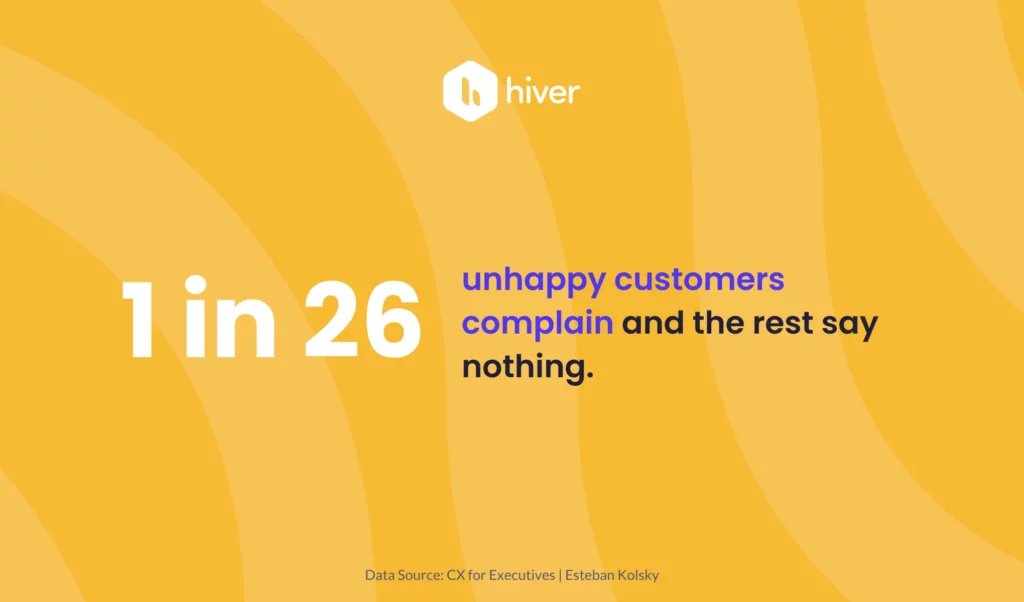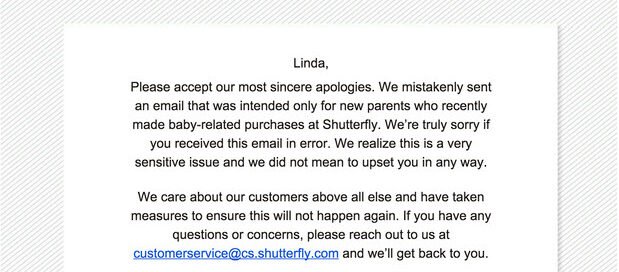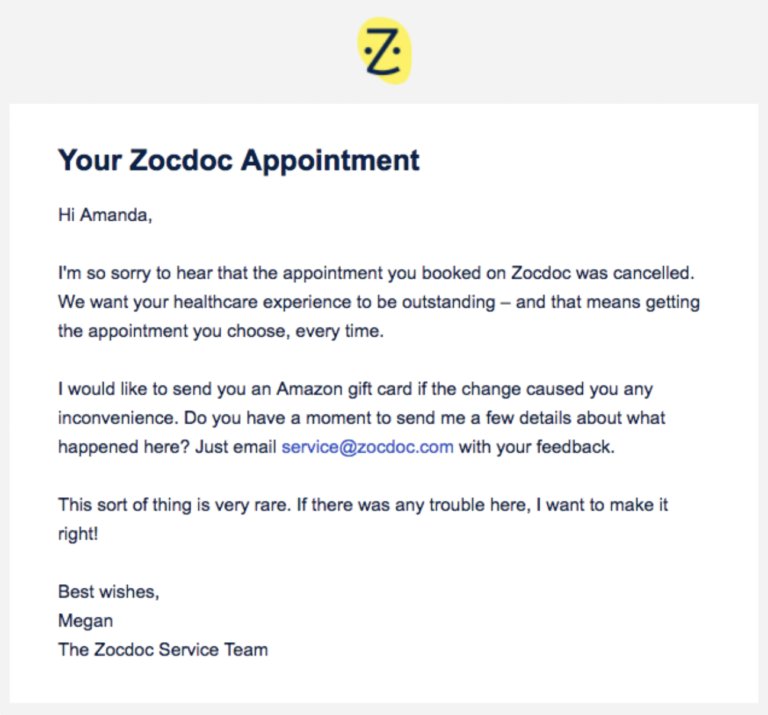Decoding Customer Psychology: Lessons Learned from Top Brands

Table of contents
As they say, being human is good business.
Taking a human-centric approach has always been the key to better customer interactions —not to mention, it works wonders when you are dealing with an angry customer.
Despite their best effort, every once in a while, businesses are faced with the challenge of dealing with an unhappy (or angry) customer. Take, for instance, Wendy’s drive-thru assault that went viral, for all the wrong reasons. An unhappy customer went to the extreme of hurling the food she ordered at the fast-food chain’s worker.
The internet is full of videos of such raging customers. While these videos start trending, on the downside—the business suffers damages and giant losses.
Today, 58% of customers have higher expectations from customer service than they did a year ago, according to a Talkdesk research report. As expectations keep mounting, businesses need to delight their customers if they want to earn their loyalty. With all this in the backdrop, how do you salvage an angry situation with a customer?
Being able to effectively assess and address customer complaints plays a key role here. With even the best businesses receiving complaints, understanding consumer behavior will help you resolve these issues better and perhaps, make the customer a passionate advocate for your brand.
We get down to the basics of how applying the principles of customer psychology can improve the quality of customer interactions, increase customer satisfaction and amp up your customer support game.
Table of Contents
- Inside the mind of an angry customer
- Put customer psychology to work and win customers for life
- Best practices for handling customer complaints
- The takeaway
Inside the mind of an angry customer
In recent times, research within the field of consumer psychology has provided in-depth insights into how customers experience various service interactions and form their opinions and memories of those encounters. Going by the reports, nearly 75% of CX professionals report that customer interactions with the support team or contact center have a significant influence on the overall customer experience.
After all, customer support is and has always been a people business. To that effect, complaint management happens to be the most crucial arm of the customer support function considering how you get a first-hand experience of the best (and the worst) show of human emotions.
So why do customers get angry at all? Or better yet, what happens inside the mind of an angry customer?
Customers complain for a variety of reasons like misrepresentations, failure to deliver, or shoddy customer experience. The feeling of anger can differ from person to person. According to the recalibrational theory, anger arises from a feeling of frustration. This could most likely stem from a situation that we consider unfair, which could push us into a fight or flight mode.
Anger is certainly not a pleasant sight—the amygdala in the brain, which is the part that deals with this strong emotion, gets triggered to do something rash as a response to the adrenaline rush through the body. In terms of neuroscience, this response to anger lasts less than two seconds. So, complainers tend to react before reasoning takes over. Or in some cases, these are customers who truly believe that anger will give them an upper hand in the situation.
But did you know that angry customers can be good for your business? Yes, you read that right—there sure is positivity in the negativity. Customer complaints are a source of truth that helps you identify problem areas and make things right. That said, not all customers will show you their annoyance and raise complaints.

Put customer psychology to work and win customers for life
Non-complainers have a higher likelihood of switching to your competitor, which is why you need to avoid this situation at all costs. There are many reasons for people to shy away from complaining. The service provider’s responsiveness coupled with the time and effort that is involved, are a few of the factors. Personality type is another key reason for many customers to hide their annoyance and never come back to your business.
Psychologist and professor Robin M. Kowalski, found that people’s motivation to complain is related to their personality type. Understanding the psychology of a complainer and their personality type is paramount to better gauge customer needs, and resolve their issues.
A few of the most common types of complainers include:
- A customer who has been legitimately wronged. They have a valid reason for complaining and you need to act fast to win them back.
- Then you have the pessimist or the customer who is just having a bad day—in which case, it’s highly unlikely that anything you do will make them happy!
- We then have the big spenders. While they love to splurge they also will push your support team’s buttons till they get the special treatment that they feel they are entitled to.
- Lastly, we have the ones who love to troll brands and cook up a viral storm on social media, only to seek some personal fame in return.
Once you have sized up the customer and the situation—the next step is to listen. Let the customer express their point of view and vent out if needed before you proceed to address their issue and solve their problem.
Bottom line: Customers leave a company for many reasons, let the lack of care or poor customer service not be one of them.

Best practices for handling customer complaints
Handling customer complaints is never going to be easy. But there are ways to approach angry customers, calm them down and save the day. We did some digging and we have arrived at five ways in which you can handle customer complaints. We’re throwing in a few examples as well, to show you how it’s done right.
1. Remain calm and empathize with the customer
Typically, when things go wrong and a customer retaliates—customer support reps may go into a stressful and defensive mode, which could only make matters worse. When you fear the outcome of the situation, stress sets in.
Apply “the art of letting go”—worry less about fixing the situation and approach the customer with empathy and a zen state of mind. Your customer might be visibly distressed or angry, but always remember to maintain a calm and composed demeanor.
Shutterfly, a photography and gifting company, shows you how to be empathetic (without overdoing it),in the below response to an upset customer.

2. Get to the bottom of it
Once your customer has let out all their frustration, you then need to get to the source of the issue. Find out what was the point of friction that led to the issue. Make a mental note of the information you need here to resolve the problem at hand. Asking all the right questions will help you find out the root cause and figure out ways to resolve the issue. It’ll also help you identify if there are any points of feedback that can help you improve your customer experience.
3. No time to waste—be quick with your responses
Customer complaints can escalate quickly and before you know it, the damage might be too far-fetched to control. Most customers who are in a fit of rage would have preferred a resolution yesterday, which is why you need to act fast and provide immediate remedies.
Take the case of how the CEO of Tesla, Elon Musk lost no time in responding to a user on Twitter. Back in 2017, Paul Frank reached out asking for a program to move back the seat and raise the steering wheel once the car has been parked. And Elon responded the same day stating that this will be an upgrade that Tesla will be making to all their cars. Elon sure knows how to make a statement!

The right customer service software can help you keep up with quick replies and enable your team to provide a stellar customer experience.
4. Did we mention an apology works?
When you are at fault, an apology is a must! But what happens when the customer is angry for a reason beyond your control? Still, apologize.
Apologize for the situation but don’t take the blame. You may want to add a side note to your apology or maybe a gift card—just the way Zocdoc (a platform connecting specialty doctors to users) did for an appointment that was canceled for no fault of theirs.

5. Be sure to check back and see if the issue is resolved
Finding and proposing a possible solution is just half the job done. You need to ensure that the solution you have suggested has actually helped in solving the issue. To be on the safer side, always check if there is anything else you can do to help the customer. Better yet, reach out after a few days just to ensure that the problem is resolved and everything is working fine for your customer.
The takeaway
To ensure that every customer that interacts with your brand leaves feeling positive about the service they receive—you need to strive toward a customer centric-mindset. Another critical aspect is customer communication. How you communicate with customers can make or break the deal for an angry customer.
These best practices are sure to set you on the right path and help you not only smoothen an angry customer interaction but also fetch some genuine feedback to work on your customer experience strategy.

































